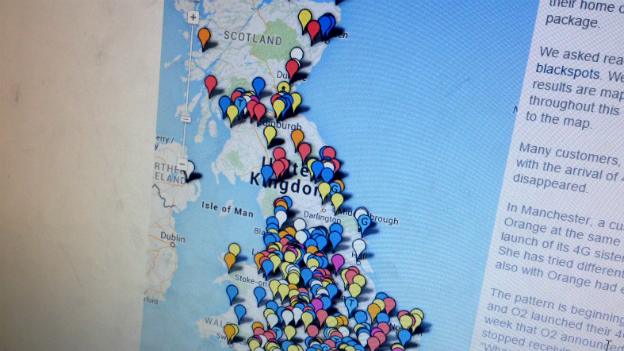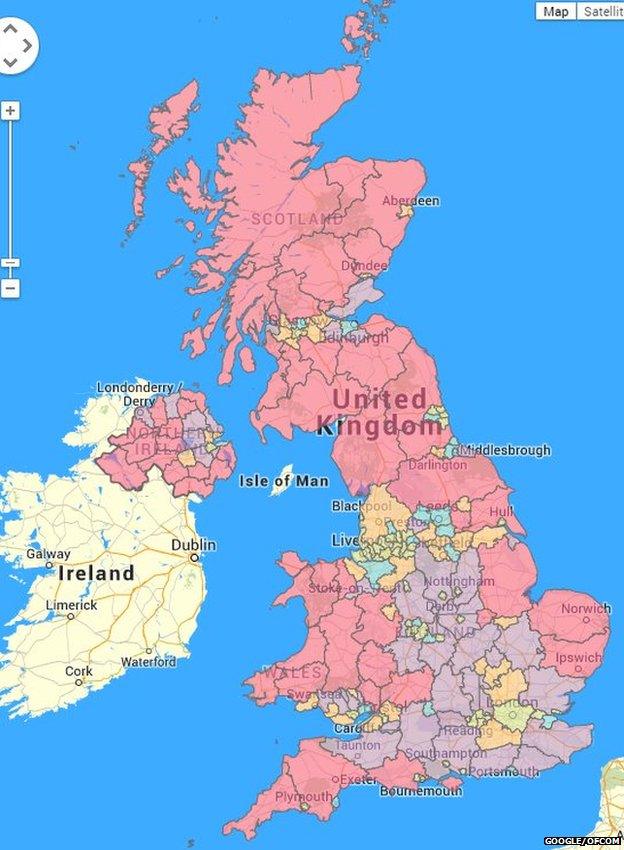Mobile phone coverage maps are SO confusing
- Published
The government says it wants to make phone operators share coverage to cut out so-called notspots - areas where there's no signal.
It says partial "notspots", where there is coverage from some but not all mobile networks, affect a fifth of the UK.
The plan being put forward would see people transferred to rival networks when they lose signal on theirs.
But experts aren't convinced it'll work.
At Newsbeat we admit we're finding it a bit difficult to get our heads around the various maps.
Is your brain melting looking at the next few images?

The Guardian's map of broadband blackspots
Matthew Howett, an analyst with research firm Ovum, told Newsbeat they are useful but only "to a point".
He said: "It's generally quite impossible to get relevant info from these maps.
"In reality lots of other factors affect signal, such as what your house is made from, distance from the mast and how many other users are trying to use their phones at one time."
This next one may clarify things for you.
It's the coverage map by the regulator Ofcom, the people in charge of keeping the phone companies in check. The pink areas are where coverage is most patchy.

No clearer?
Maybe it's a phone signal map issue?
This map is about broadband delivery.

So if these maps are leaving your head swimming what should you do before choosing a phone network or broadband provider?
Matthew Howett says the only way you can find out if a network will work for you is to try it.
Matthew says if you don't get coverage many networks will now let you out of your contract if you're still in your cooling off period.
All the operators say they are investing in their networks and offering more rural coverage.
Follow @BBCNewsbeat, external on Twitter and Radio1Newsbeat, external on YouTube